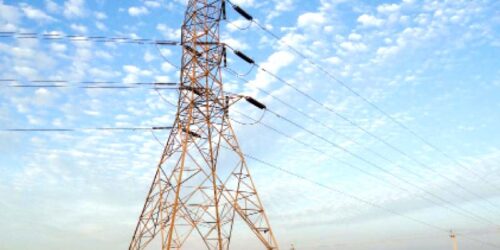ISLAMABAD: Even though the government appears to be slowing down ongoing power projects, it will have to increase generation capacity by 35-40 per cent from about 34,501MW to 57,204MW by 2030.
According to the Indicative Generation Capacity Expansion Plan (IGCEP), 2030, prepared by the National Transmission and Dispatch Company, the annualised compound growth rate (ACGR) of 3.3pc to 4.6pc is required.
The net present value (NPV) of investment required to manage generation infrastructure’s construction and operations by 2030 has been estimated to range between $31.6 billion and $32.2bn. The NPV investment requirements include capital expenditure (CAPEX) and operational expenditure (OPEX) but neither includes the existing capacity payments nor the CAPEX of committed plants.
The estimates cover the whole of Pakistan except K-Electric whose power import from national grid has been taken at 2050MW until 2022. In all low-to-high demand estimates, about 6,450MW of existing plants are estimated to be retired by 2030 in all cases.
“The base case results show that to meet a demand of 34,377MW by 2030, a generation capacity of 53,315MW is proposed, which includes utilisation of existing generation facilities, consideration of committed power plants and optimisation of candidate power plants,” said the IGCEP 2030. The least cost, long-term generation expansion plan for the NTDC system for the 2021-30 period has been developed using generation planning software — PLEXOS.
To meet the demand by 2030, the share from variable renewable energy (VRE) resources has been put at 1,964MW for solar, 3,795MW for wind and 749MW of bagasse-based plants. The estimates are finalised on least cost.
Besides the inclusion of VREs, some of the key features of the model include minimal reliance on imported fuels i.e. imported coal, Re-gasified Liquid Natural Gas (RLNG) and Residual Furnace Oil (RFO) based technologies and increased share of hydropower as well as local coal. Inclusion of VREs, hydro and Thar coal are anticipated to help lower the basket price of the overall system.
The self-sufficient ratio of primary energy i.e. the contribution of energy generation by indigenous power sources stands at 58.9pc at present while as per base case scenario, indigenisation of energy generation is envisaged to achieve 90.2pc by 2030 to correspond to higher energy security in the country.
In addition to the base case, further two scenarios are developed to facilitate the decision-makers in reaching an informed decision which include low and high demand scenarios.
In the high case, the demand is anticipated at 57,204MW to be met through existing 28,051MW capacity, 22,182MW of committed power plants and 6,972MW of candidate projects.
Similarly, the IGCEP-30 also addresses the impact of carbon emissions due to addition of power generation in future. Carbon emissions in the country by power generation accounts for 0.353 kg-CO2/kWh in 2021 and this indicator reduces to 0.202 kg-CO2/kWh by 2030 which is even less than average of member countries of the Organisation for Economic Cooperation and Development.
The results of the base case simulation suggest that during the coming five years, the contribution of gas-fired power plants in the generation mix (GWh) will decrease from present 12pc to mere 5pc. Similarly, with the induction of new local coal-based committed power plants in Thar, during the next 5 years, share of local coal in the generation mix will enhance to 15pc.
The RLNG-based plants, though installed and available, are envisaged to have a decreasing share in the energy mix from 2021 to 2030 i.e. from 19pc to 1pc in 2025 and then eventually falling nearly to zero pc in 2030. Similar trend is there for imported coal-based plants whose contribution in the overall generation mix falls from 22pc in 2021 to only 10pc 2030.
Moreover, the share of solar and wind in the overall energy mix would increase from about 3pc in 2021 to 10pc in 2030. The overall generation capacity in the system would increase from 34,100MW in 2021 to 53,315MW in 2030. Major increase in the capacity is observed in the hydropower, solar and wind plants. New solar and wind plants are optimised by PLEXOS being cheaper source of energy.





